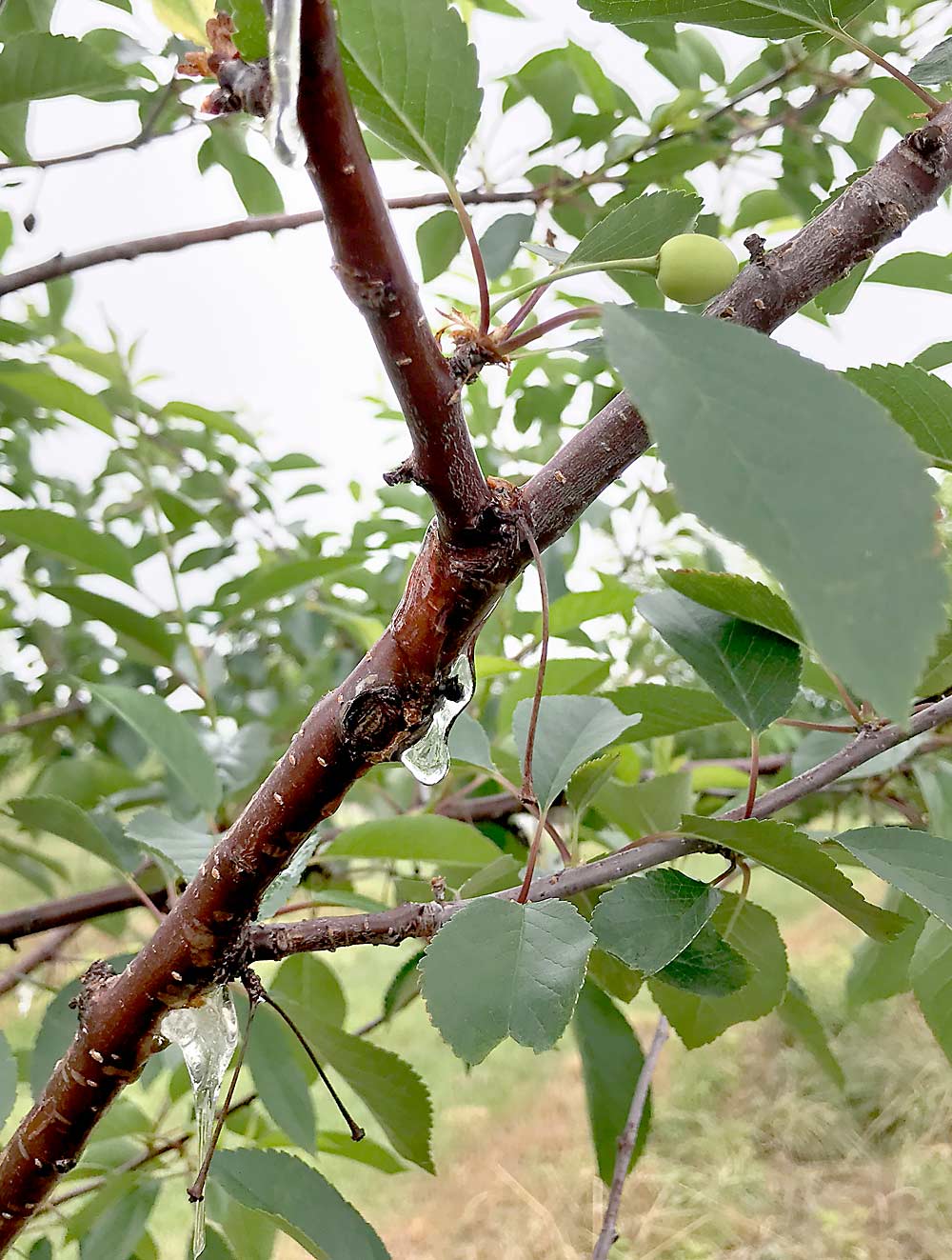
For decades, tart cherry growers have used the plant growth regulator ethephon to loosen cherry stems just before harvest, making the cherries more likely to drop when a mechanical shaker shakes the tree.
But growers might have a use for ethephon earlier in the season, too: keeping fruit off trees that are too young for the shaker.
“Tart cherry trees need to be physically big enough to shake them with our current harvest technology,” said Nikki Rothwell, a Michigan State University Extension educator and coordinator of the Northwest Michigan Horticulture Research Center. “Therefore, at the time of planting until years five, six or seven, we want those trees to get as big as they can as fast as they can. Putting fruit on the tree slows their growth and delays their harvest potential.”
In addition, fruit on young trees can attract spotted wing drosophila — not just to the young blocks but to the blocks surrounding them — forcing growers to spray trees they can’t yet harvest, Rothwell said.
Since the tart cherry industry sometimes needs to shrink its crop size for marketing purposes, it’s better for growers to drop fruit during bloom — before they end up with fields of ripe, rotting cherries that also can become SWD reservoirs, said Todd Einhorn, an MSU associate professor and tree fruit physiologist.
Growers typically use the plant growth regulator (PGR) gibberellin to minimize the fruiting potential of their young trees. But despite the use of gibberellin, young trees have been setting a lot more fruit in recent years, Rothwell said.
“Initially, we thought it was caused by cool spring temperatures, which reduce the effectiveness of any PGR,” Rothwell said. “However, it has been happening for many years, and we are unsure why.”
Seeking an “insurance policy” for growers who aren’t getting results from gibberellin, Rothwell approached Einhorn, who suggested ethephon as a way to defruit young trees. He knew the PGR accelerated the ripening process at maturity, but he had to find out if it could drop cherries during bloom — before they’re biologically prepared to drop.
From 2017 through 2019, Einhorn tested ethephon on cherry trees at the Northwest Michigan Horticulture Research Center, MSU’s Clarksville Research Center and commercial farms. His application timings differed, but he was generally aiming for first white to shuck split.
The short version of his findings: Ethephon can drop fruit from trees early in the season, but results are highly dependent on temperature.
When temperatures are higher than 80 degrees Fahrenheit, applying ethephon at 400 to 500 parts per million “can drop fruit pretty well,” Einhorn said. Unfortunately, temperatures rarely reach that level during cherry bloom, when they typically fall between 50 degrees and 70 degrees. At those temperatures, ethephon must be sprayed at higher rates; an application of 800 ppm can knock off 80 percent of the fruit — a good drop, but not great.
“We’d love to see 100 percent,” he said.
Einhorn also learned that ethephon is more effective in earlier applications. The closer you get to shuck split, the less effective it gets.
Einhorn concluded that ethephon, though not a “silver bullet” for early fruit drop, has potential for this defruiting use in the future.
“At this point, it is not a slam-dunk, but we’re trying to help growers in the best way we can,” Rothwell said.
Caustic compounds
Einhorn has also been studying a different mode of action for the early dropping of fruit: burning off flowers with caustic compounds such as lime sulfur and oil. He’s discovered that caustic compounds can create a total fruit drop, but they’re phytotoxic. If he can find an application method that doesn’t burn leaves too much or otherwise damage the tree, caustic compounds could be a more straightforward way to drop fruit early in the season, without the use of a plant growth regulator.•
—by Matt Milkovich






Leave A Comment